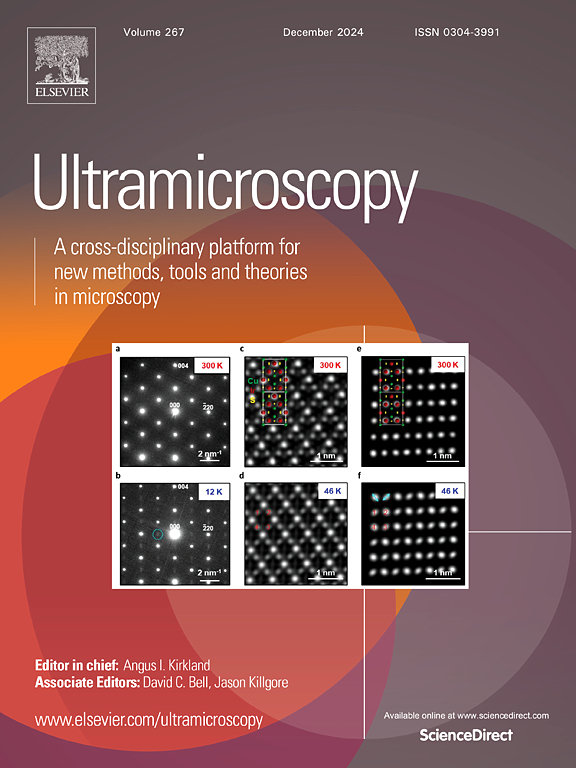Growth and oxidation of ultra-thin Pt-Sn layers on Pt(111) by molecular and atomic oxygen
IF 2
3区 工程技术
Q2 MICROSCOPY
引用次数: 0
Abstract
The preparation of ultra-thin PtSn-alloyed layers by molecular beam epitaxy was studied using low-energy electron microscopy (LEEM) and micro-diffraction (-LEED). Deposition at a sample temperature of 435 °C initially results in the formation of a PtSn/Pt(111) layer showing a (2 × 2) reconstruction. With continued Sn deposition, a PtSn/Pt(111) layer develops, showing a ()R30° reconstruction. An ultra-thin tin oxide was formed from the (2 × 2) surface by exposure to molecular oxygen at temperatures of 500 °C and 590 °C, respectively. LEED shows the evolution of a new surface structure, which could be identified as an incommensurate rectangular reconstruction with lattice parameters of a = (6.4 ± 0.1) Å and b = (8.6 ± 0.1) Å present in three domains rotated by 120° with respect to each other. This structure can be related to the zigzag reconstructions found for similar ultra-thin oxide systems. Contrarily, the ()R30° structure showed no oxide formation even after extensive exposure to molecular oxygen. The usage of atomic oxygen, however, allows for oxidation of this surface and the growth of thicker oxides on both types of overlayers. At 500 °C this process is accompanied by substantial roughening of the surface.
分子氧和原子氧在Pt(111)上生长和氧化超薄Pt- sn层。
采用低能电子显微镜(LEEM)和微衍射(μ-LEED)研究了分子束外延法制备超薄ptsn合金层。在435°C的样品温度下沉积,最初形成Pt3Sn/Pt(111)层,呈现(2 × 2)重构。随着Sn的持续沉积,形成Pt2Sn/Pt(111)层,呈现(3×3)R30°重构。在温度分别为500℃和590℃的条件下,将(2 × 2)表面暴露于分子氧中形成超薄氧化锡。LEED显示了一个新的表面结构的演变,该结构可以被识别为一个不相称的矩形2.301.83.6重构,晶格参数为a =(6.4±0.1)Å和b =(8.6±0.1)Å,存在于相互旋转120°的三个域中。这种结构可以与类似超薄氧化物体系的锯齿形重建有关。相反,(3×3)R30°结构即使在大量暴露于分子氧后也没有氧化形成。然而,原子氧的使用允许该表面氧化,并在两种类型的覆盖层上生长更厚的氧化物。在500°C时,该过程伴随着表面的大量粗化。
本文章由计算机程序翻译,如有差异,请以英文原文为准。
求助全文
约1分钟内获得全文
求助全文
来源期刊

Ultramicroscopy
工程技术-显微镜技术
CiteScore
4.60
自引率
13.60%
发文量
117
审稿时长
5.3 months
期刊介绍:
Ultramicroscopy is an established journal that provides a forum for the publication of original research papers, invited reviews and rapid communications. The scope of Ultramicroscopy is to describe advances in instrumentation, methods and theory related to all modes of microscopical imaging, diffraction and spectroscopy in the life and physical sciences.
 求助内容:
求助内容: 应助结果提醒方式:
应助结果提醒方式:


